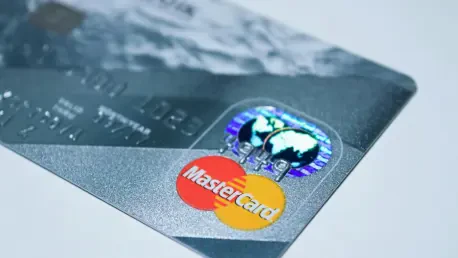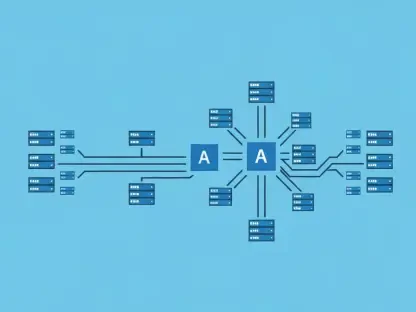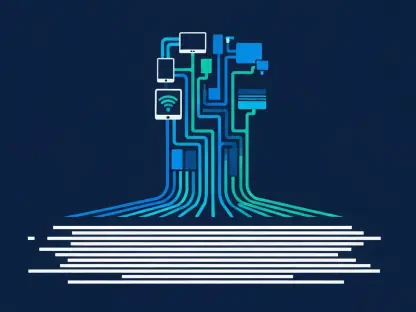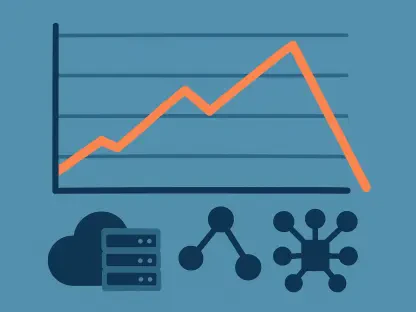In today’s rapidly evolving financial landscape, businesses are increasingly seeking solutions that offer efficiency, security, and simplicity in their payment processes. Leading this charge is Mastercard with its innovative solutions aimed at transforming how B2B payments are conducted. We’re here with Vijay Raina, a noted expert in enterprise SaaS technology, to dive deep into how these cutting-edge solutions are reshaping B2B payment strategies.
Can you explain how Mastercard Receivables Manager modernizes supplier reconciliation and streamlines virtual card payments?
Mastercard Receivables Manager is a real game-changer for supplier reconciliation. It automates the entire process, making virtual card payments not only more accessible but also much more efficient. By integrating payments directly into the suppliers’ existing systems, it reduces the complexity and manually intensive nature of traditional payment methods. This means businesses can focus less on the process and more on their core activities.
How does Mastercard Receivables Manager make virtual cards more efficient, secure, and cost-effective for businesses to accept?
The inefficiencies found in manual processes, such as verifying and recording payments, are removed. The automation brings about security through features like authentication and fraud detection. Cost-efficiency comes into play because automated processes require less manual intervention, thereby reducing labor costs and minimizing errors.
What inspired Mastercard to introduce Commercial Direct Payments alongside its existing solutions?
The introduction of Commercial Direct Payments was inspired by the need for a streamlined B2B payment process that fully automates virtual card payments and reconciliation. This aligns well with the demand for more innovative solutions that cater to modern business requirements and support their ongoing digital transformation processes.
Could you describe what Commercial Direct Payments is and how it fully automates virtual card payments and reconciliation?
Commercial Direct Payments is an advanced straight-through processing solution designed to eliminate the manual steps in payment workflows. It achieves full automation by enabling funds to be deposited directly into suppliers’ accounts. The detailed remittance data provided integrates seamlessly into the accounts receivable workflow, simplifying reconciliation for suppliers.
How do these new offerings enhance the B2B payment experience for both buyers and suppliers?
These solutions enhance the B2B payment experience by providing speed and efficiency. Buyers enjoy the ease of initiating payments, while suppliers benefit from quicker access to funds. The entire process is secure and transparent, offering a seamless transaction experience from start to finish.
Why is digitizing payment processes a top priority for 93% of B2B suppliers, according to Mastercard’s survey?
Digitizing payment processes allows suppliers to meet evolving business demands. It’s crucial for improving efficiency, reducing manual errors, and providing better cash flow management. In a digital economy, staying competitive requires adopting solutions that facilitate such advancements.
What are some of the challenges that two-thirds of suppliers face in meeting buyer payment expectations?
Suppliers often face challenges such as lengthy payment cycles and the complexity of integrating payment data into their existing systems. These issues can cause delays and inefficiencies, leading to dissatisfaction for both parties involved in the transaction.
How does the Commercial Direct Payments solution power accounts receivable automation for suppliers?
It transforms accounts receivable automation by streamlining data integration processes. The rich remittance data flows directly into ERP systems, reducing manual entries and the scope for errors. This enables suppliers to allocate resources to more strategic tasks.
In what ways does Commercial Direct Payments optimize digital payment opportunities for buyers?
Buyers can take advantage of this solution by having the flexibility to choose between physical or virtual cards. This flexibility can significantly improve cash flow management and provide better control over transaction timings.
Can you elaborate on how Commercial Direct Payments eliminates manual steps in the payment process?
It automates the entire payment journey. From the moment a buyer initiates a payment to when the funds are deposited into the supplier’s account, Commercial Direct Payments ensures everything is processed without manual intervention, thus reducing the potential for errors and delays.
How is remittance data integrated into AR workflows, and what benefits does this bring to suppliers?
The remittance data is seamlessly fed into the suppliers’ AR workflows, which allows for better tracking, management, and analysis of payments. This not only helps in immediate reconciliation but also offers strategic insights into payment patterns and cash flow management.
How can issuers and acquirers benefit from straight-through processing without multiple costly connections?
By having a single connection to Mastercard, issuers and acquirers avoid the need for various costly connections, saving time and resources. This single-link network facilitates faster, more cost-effective transactions, benefiting all stakeholders involved.
What role does a single connection to Mastercard play in streamlining payment and remittance data flow?
This connection is pivotal. It ensures that all payments and associated remittance data flow seamlessly between parties. By standardizing the flow of information, it reduces complexity and system silos, fostering a more integrated financial ecosystem.
How does the flexibility to pay with physical or virtual cards help buyers improve their cash flow?
Buyers benefit from this flexibility as it allows them to make payment decisions based on what best suits their cash flow needs at any given time, providing them with more control over their financial operations.
Can you discuss the security features that ensure suppliers are paid securely, efficiently, and on time?
Security features such as robust authentication and encryption ensure payments are secure. Mastercard’s solutions enable timely payments by automating processes, which also reduces the potential for fraudulent activities, keeping supplier payments secure and reliable.
Are there any specific industries or types of businesses that would benefit most from these solutions?
Industries with high transaction volumes, like retail or manufacturing, would benefit enormously. The solutions offer considerable advantages wherever there’s a need for efficient, automated financial operations involving multiple transactions.
How does the introduction of these solutions align with Mastercard’s broader strategy for B2B payments?
This move fits Mastercard’s strategic objective to dominate the B2B payments landscape by offering solutions that bring efficiency and modernization to traditional payment processes. It’s about transforming the B2B payments sphere into a more consumer-friendly experience.
Could you share any success stories or case studies from businesses that have adopted these new solutions?
Many businesses have reported significant savings in time and costs due to these solutions. However, specific case studies typically highlight notable reductions in payment processing times and enhanced financial management capabilities.
What future innovations or enhancements can we expect from Mastercard in the realm of B2B payments?
As the landscape evolves, we can anticipate further advancements in the integration of AI and machine learning to optimize payment processes. Innovations may focus on greater data insights and predictive analytics to enhance decision-making in financial systems.
Do you have any advice for our readers?
Embrace digital solutions that align with your business model. The right payment automation strategy can streamline your operations, enhance security, and improve cash flow, which are critical factors for success in today’s digital world.









